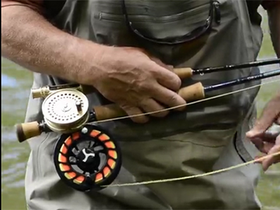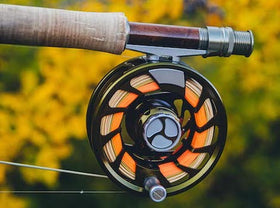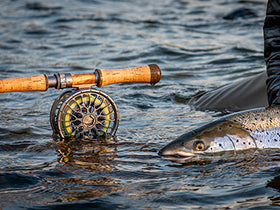
I was fishing my way up a dreamy-looking run on the Kiewa, when, to steady my way through a deep spot, I grabbed the top of a small stick protruding from the water. A moment later, I felt a stabbing pain in my palm, and as I recoiled, I glimpsed an inch-long black shape being flung out of my hand. Some sort of wasp? Giant ant? Spider? I watched as a tidy white circle formed at the bite site with a dark core like a bullseye. The stabbing sensation gradually subsided in the cool Kiewa water, and after a few minutes, the stiffness and swelling eased enough to keep fishing. Phew!
I never did find out what stung me, but whatever it was, it was really the only low point across two ‘halves’ of north-east Victoria stream fishing: which took place before and after – but not including – the Labour Day long weekend.
Part One was a trip to the Eildon area. On the way up, I fished a farmland stream on an unseasonably warm, muggy afternoon (weather which turned out to be pretty typical for the other days as well). Both flow and clarity were about what I would expect for early autumn, but the action, at least at first, was a bit disappointing. By the time I'd fished back up to the car, I’d only caught two trout worth recording. Maybe there was something to that cormorant plague stuff after all?
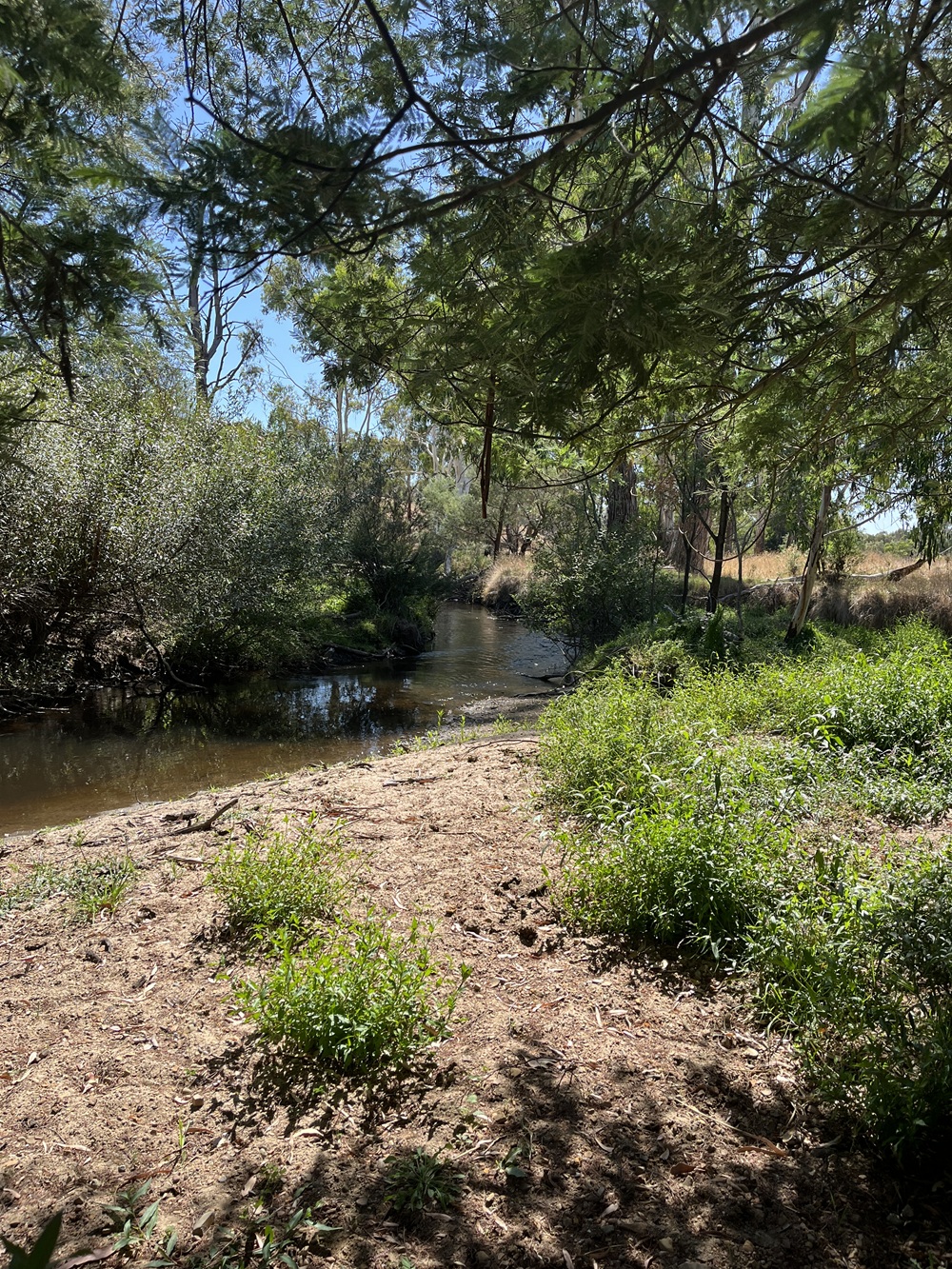 Nice water, but mainly just small fish?
Nice water, but mainly just small fish?One plus was swarms of ‘young of the year’ trout, not much bigger than a finger, which tried but mostly failed to eat my flies.
I considered moving on to another stream, but a rise up ahead (the first I’d seen for the afternoon) persuaded me to stay. Just as well. Around the next bend, I could see several more trout rising on a long, straight stretch of river, recently shaded from the lowering sun.
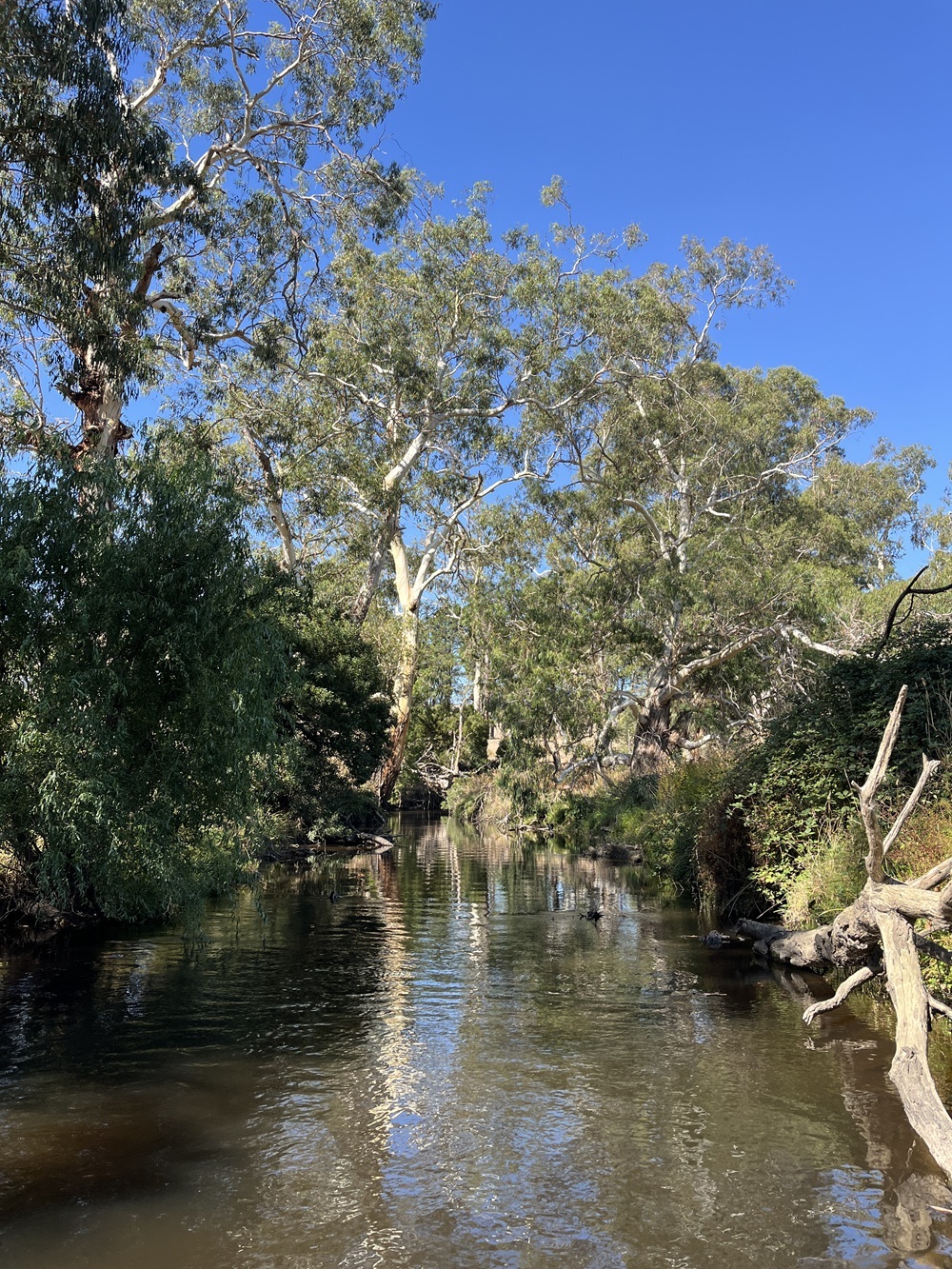 The riser stretch...
The riser stretch...As the familiar but valid saying goes, it was like a switch had been flicked. Over the next hundred metres and half hour, six respectable trout grabbed my little Royal Wulff, four of which I landed. The nymph off the back, which had accounted for the only two recordable trout earlier, came off. Sometimes, a nymph is a necessity, and gladly employed. However, the dry/ dropper is always a compromise, and especially so during the ‘season of sticks and bark’. Fishing a floater on its own was liberating, and I enjoyed being able to fish under branches and over drowned snags; places where a nymph would have proved difficult to impossible.
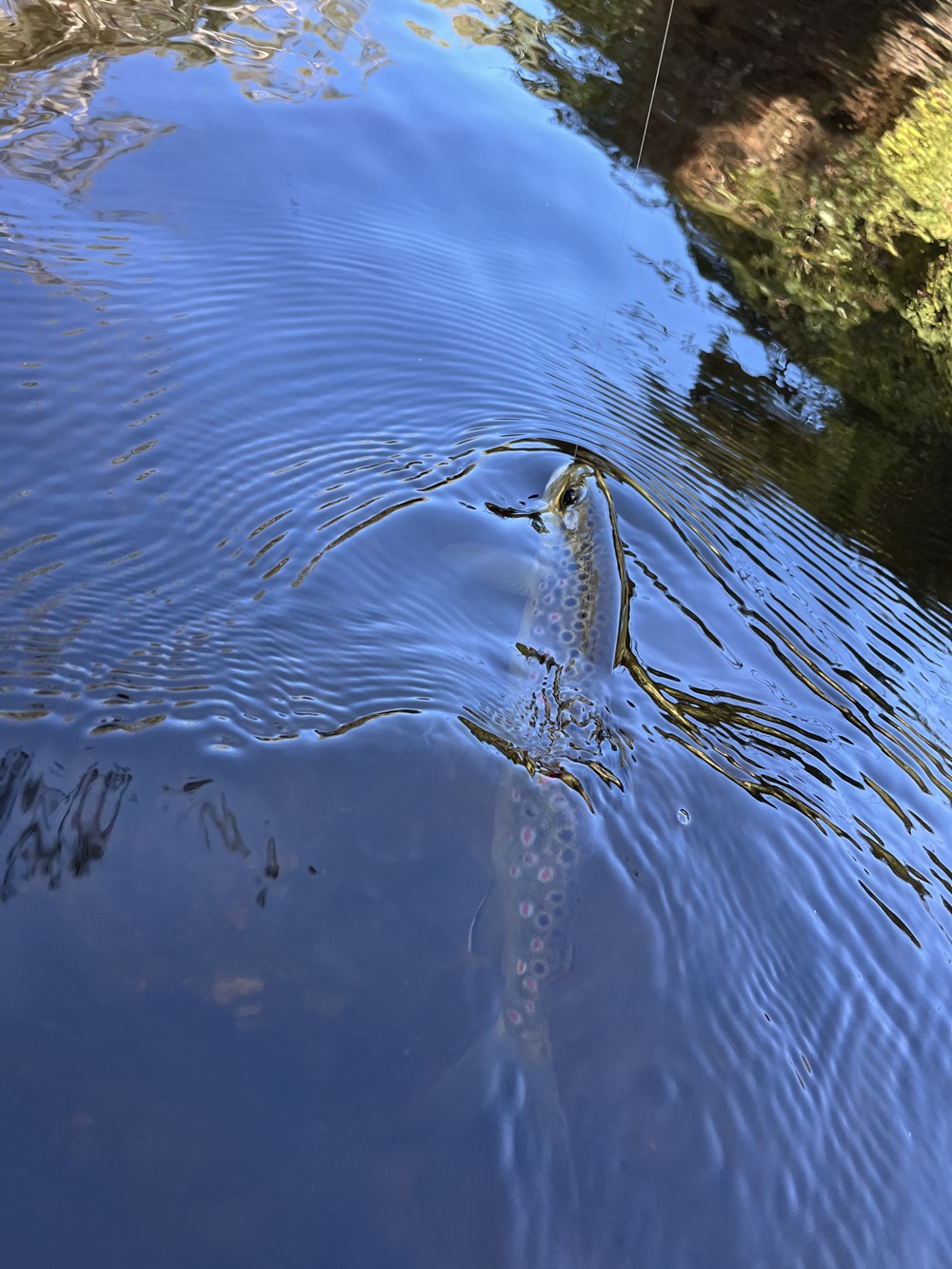 ... and one of them up close.
... and one of them up close.The subsequent sessions of Part One with mate JD were spent way back in the mountains. Being well beyond mobile range, fishing with a companion is all but essential for safety up here, so that factor, plus the luxury of this being a multi-day trip, made for an opportunity too good to pass up. From rainforest headwater streams to broader mountain rivers, these waters offered a different experience to the more civilised farmland streams, and an almost infinite list of opportunities. In fact, we had to be careful not to succumb to ‘map-nia’, where every blue line becomes another case of, ‘Why don’t we give it a quick go?’
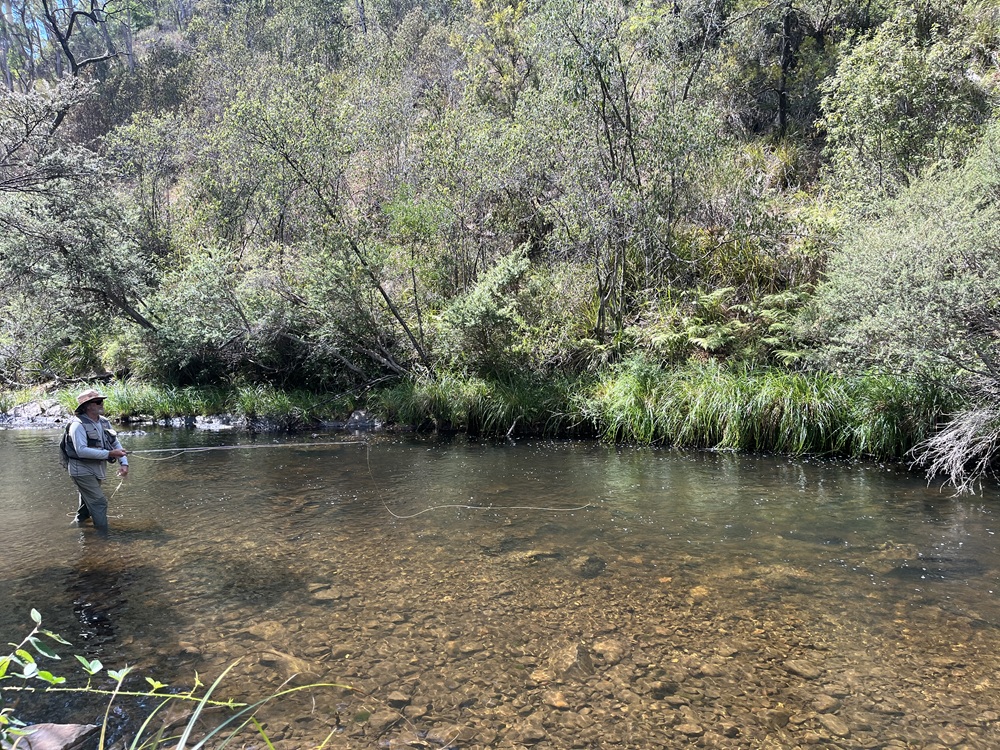 Classic water back in the mountains. JD has just missed a nice fish hard against the sword-grass.
Classic water back in the mountains. JD has just missed a nice fish hard against the sword-grass.It’s only when you’re cruising along the crest of the Great Divide at 1200 metres asl, that you can really appreciate the forested vastness that lies less than 3 hours drive north-east of Victoria’s capitol. While I enjoy the easy access of the streams in the cleared valleys, how lucky we are to have this wilderness, with places where you might be one of only a handful of people to fish in a decade.
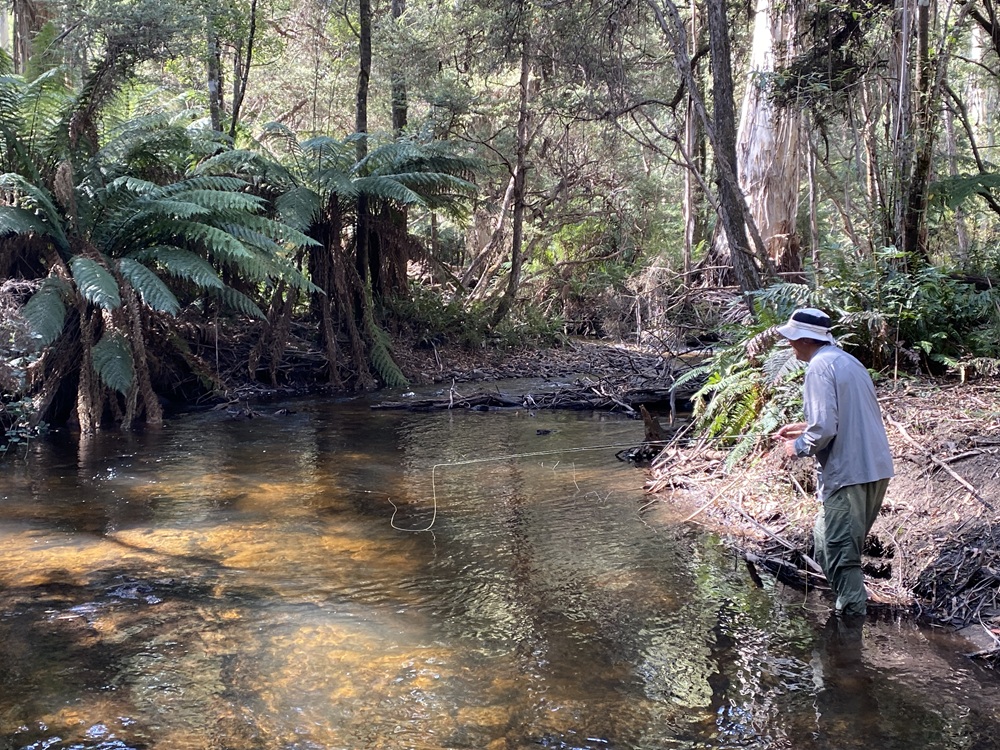 One of the more obscure blue lines on the map.
One of the more obscure blue lines on the map.After the forests, JD and I finished up on one of those farmland streams, almost a gentle decompression from the wilderness. It no longer surprises me that the fishing can be just as good on this easily accessible water, as the stuff you have to fight you way to get to.
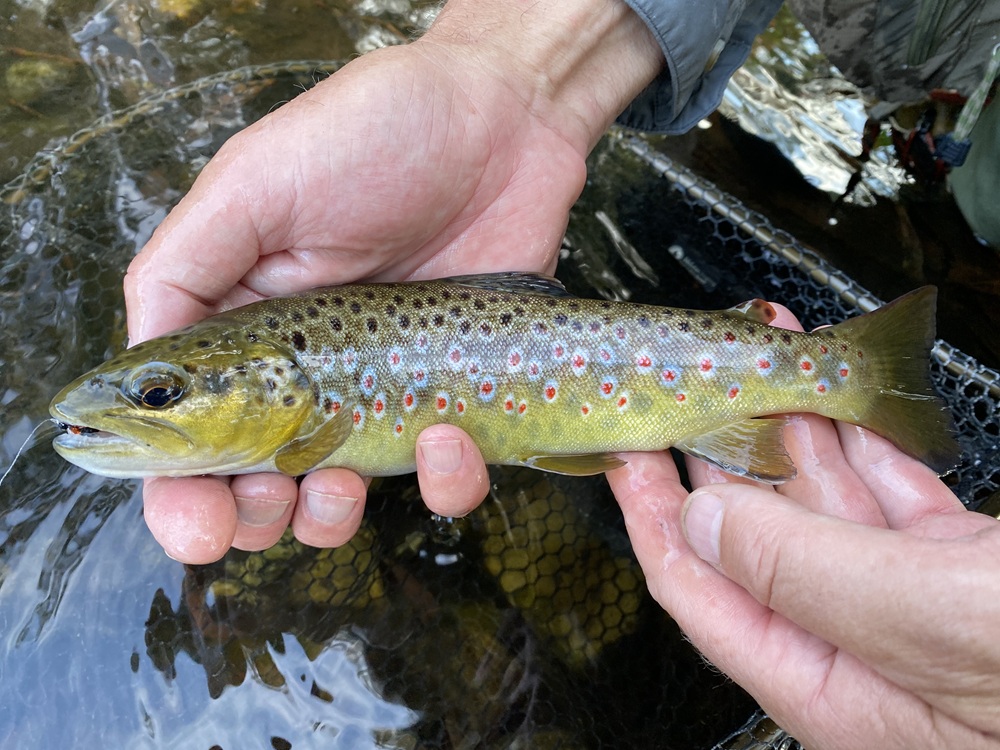 Farmland fish.
Farmland fish.***
After a long weekend break, Part Two saw another fishing mate Peter join me, heading to the Ovens and Kiewa catchments. We’d recently reconnected with a favourite outdoor ed. teacher from our school days, who, conveniently, had since settled in the Ovens Valley. I tend to be somewhat single-minded about the fishing on a fishing trip, but on this occasion, I gladly sacrificed two evening rises to catch up on a few decades’ worth of news.
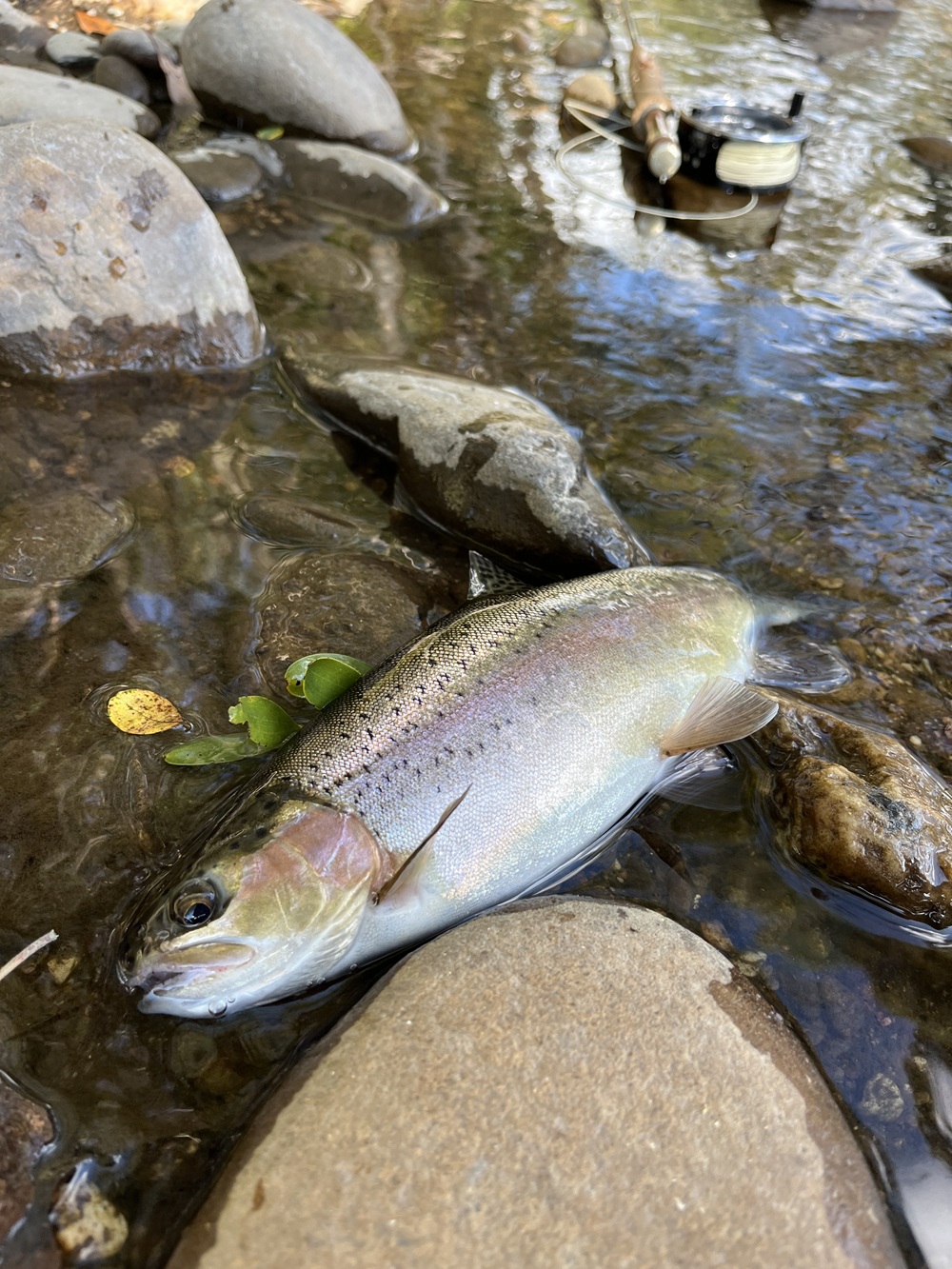 Chunky daytime trout like this made it easier to miss the evening rise.
Chunky daytime trout like this made it easier to miss the evening rise.Fortunately, the daytime action was good enough to remove FOMO on the witching hour. As with Part One, the streams were on the low side, but nothing critical – what I would regard as long-term typical for early autumn. Temperatures were certainly up though; enough to keep us thinking we should avoid the lower reaches of most streams, unless cod fishing.
The Kiewa River itself was the most challenging stream we fished for Part Two. It looked glorious, running at ‘goldilocks’ level, and crystal clear. We caught or missed a few nice fish, but the action was slower than I would have expected. Perhaps a bit warm? Or perhaps us anglers didn’t quite make the required effort, being fresh from some entertaining Ovens River fishing nearby, including three or four fish rising per pool.
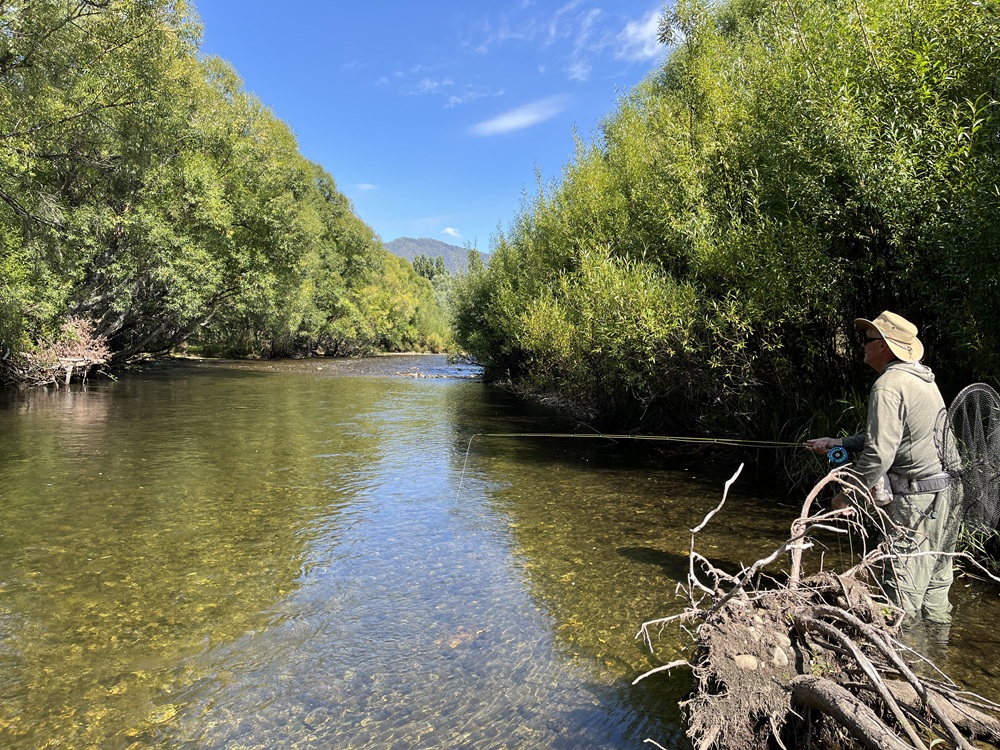 Dreamy fly water on the Kiewa.
Dreamy fly water on the Kiewa.Still, we had our moments on the Kiewa. One little victory was when a good fish hovered under the PMX but didn’t take, then rewarded a fly change to a small Royal Wulff next cast. Not so rewarding was the decent brown in the turbulent head of a run, which stuck its head out twice to try and eat the PMX, only for me or the trout to miss! (I think the fish actually missed the fly, although I admit it could have been my bad strike…)
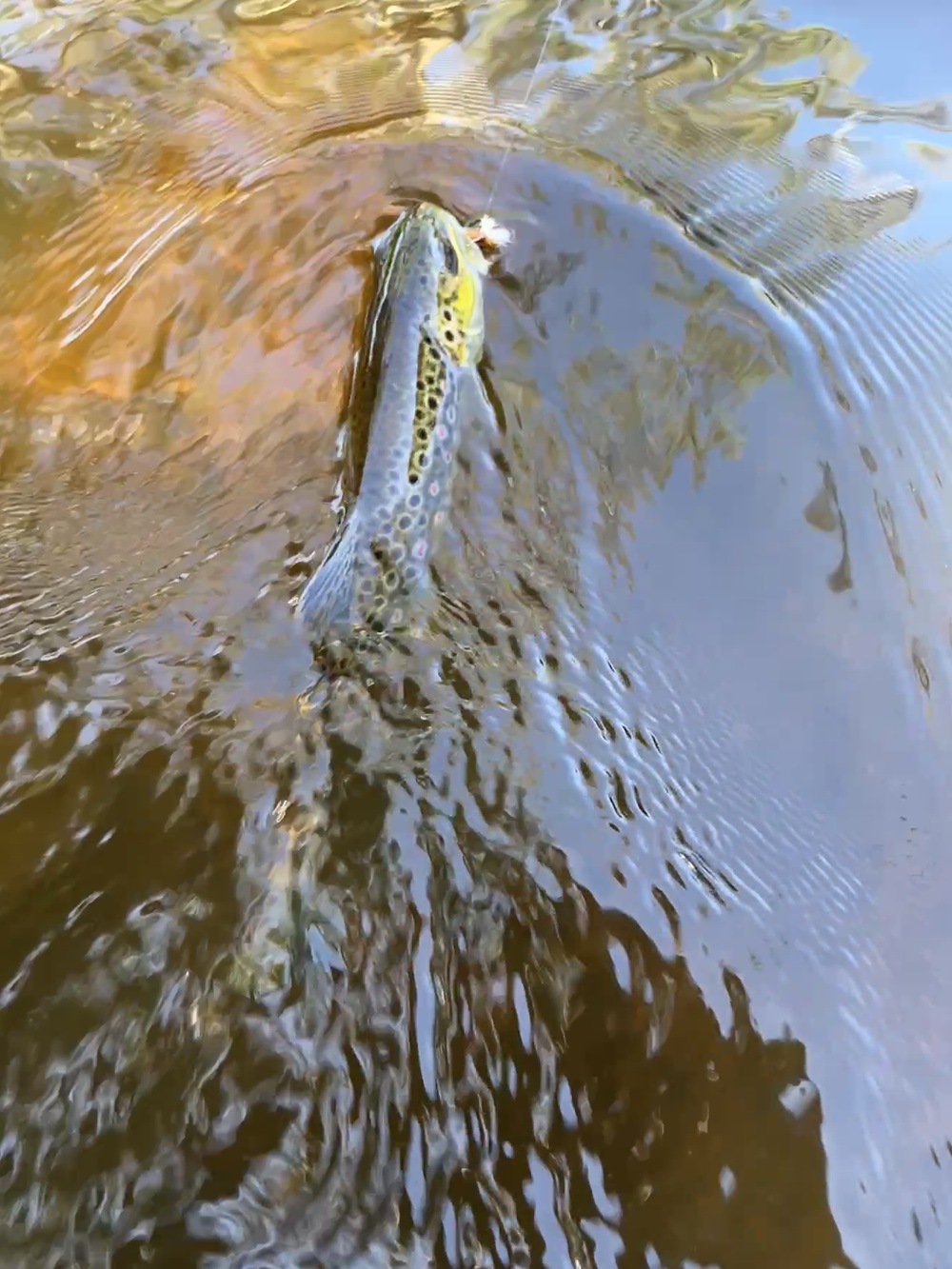 A win for the fly change.
A win for the fly change.Further back in the mountains, the water was cold, gin clear, and flowing strongly. Once again though, after an enjoyable half hour, our commitment to bouldering for the rest of the day, was compromised by the possibility of another Ovens session (and in much easier terrain) so we climbed out before the gorge closed in.
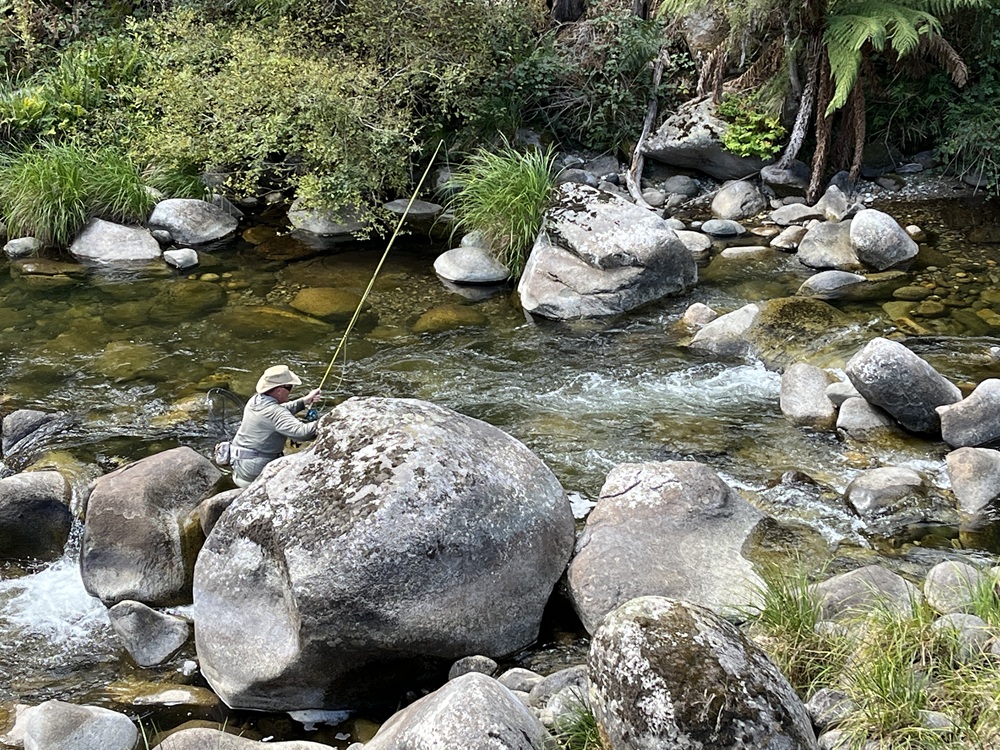 Getting a workout on the edge of the backcountry, but maybe we should have kept going?
Getting a workout on the edge of the backcountry, but maybe we should have kept going?In terms of opportunities, the Ovens proved worth the move. Once again, the lower autumn flows didn’t make for simple fishing, with stalks, casts and drifts needing to be spot on. Still, if we could get a small red spinner to drift near a riser (or a likely lie) at exactly the same pace as the surrounding bubbles and bits, an eat was likely. If this isn’t my favourite form of flyfishing, it’s close to it!
After a short and uneventful cod fish on the way home, I said goodbye to Peter, and was soon cruising down the Hume Freeway, with plenty of time to reflect on six autumn days of north-east stream fishing.
A few hours on the Hume is always a good opportunity to collect post-fishing thoughts, and also to catch up on overdue calls – and often the two coincide. When I phoned Max, one key observation I shared was, “Well Max, if we’d been overseas for a couple of years and then returned to the early autumn fishing I’ve just had, my summary would be ‘business as usual’”. Not exceptionally bad, not exceptionally good. Typical pre ‘Autumn Break’ water conditions (the season of sticks and bark!); and trout numbers about the same as usual, give or take, from stream to stream.
Perhaps there were more baby trout around than I normally see, or was that just because I was looking harder for them? And many trout I caught seemed a bit tubbier than usual, but again, I wouldn’t want to swear that was a ‘thing’ compared to early autumn normally – whatever ‘normally’ is!
Oh, and I didn’t see a single cormorant.





